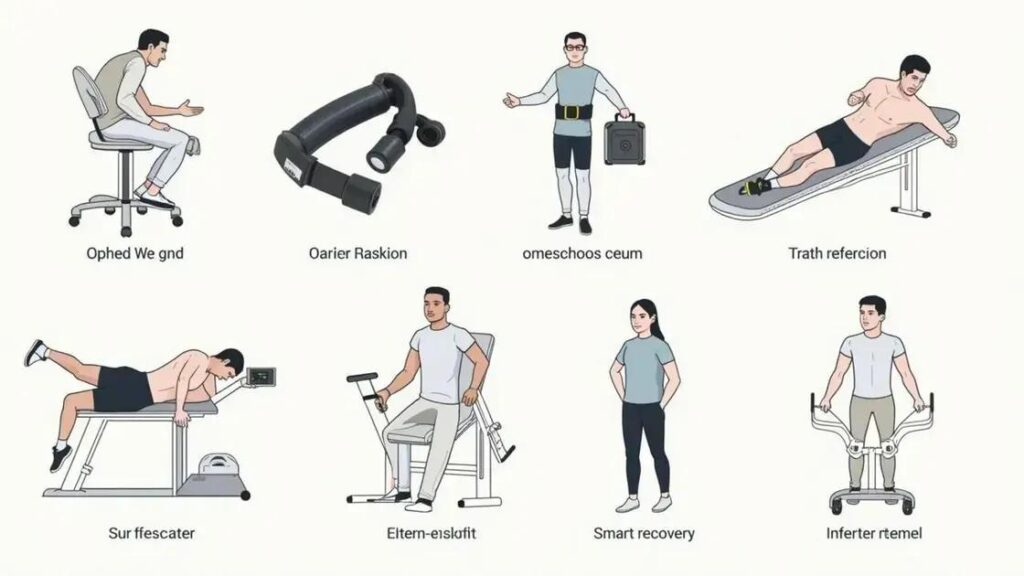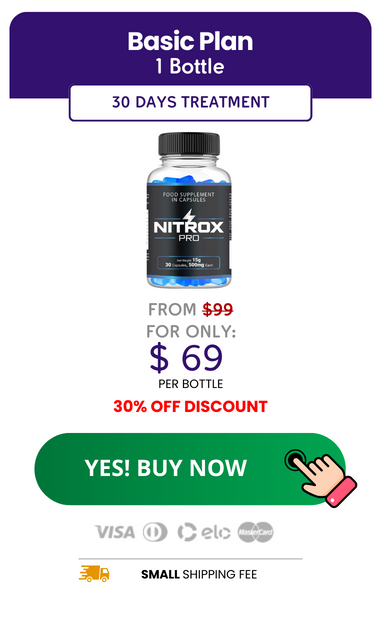The role of high-tech recovery tools in men’s post-workout routines is essential for enhancing recovery and performance. These tools, such as massage guns and compression gear, help reduce muscle soreness, improve circulation, and boost flexibility, allowing athletes to recover faster and train more effectively.
High-tech recovery tools have become essential in men’s post-workout routines. These innovative tools not only help in speeding up recovery but also enhance overall performance. As more athletes and fitness enthusiasts integrate technology into their recovery processes, understanding these tools’ benefits is crucial. In this article, we’ll look at various high-tech recovery tools, their advantages, and how to effectively incorporate them into your routine.
Understanding High-Tech Recovery Tools
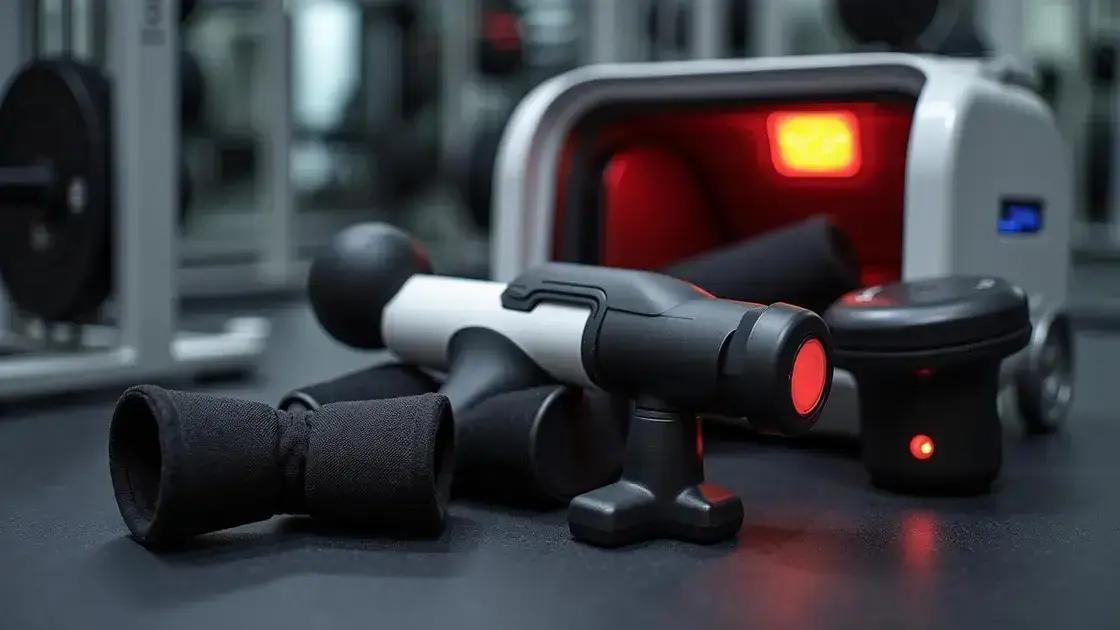
Understanding high-tech recovery tools is vital for any athlete looking to enhance their post-workout routines. These tools vary widely, including massage devices, compression gear, infrared therapy machines, and more. Each of these options plays a unique role in promoting recovery after intense physical activity.
Types of High-Tech Recovery Tools
There are several categories of high-tech recovery tools available. Massage guns are popular for their ability to ease muscle tension and soreness through vibration therapy. Compression therapy uses specialized garments to apply pressure to limbs, enhancing circulation and reducing swelling.
How They Work
These technologies aid recovery by targeting muscle fibers directly. For instance, massage guns deliver rapid bursts of pressure to penetrate deep into the muscle tissues. This action increases blood flow which helps clear out toxins and promotes healing. Similarly, infrared therapy promotes deeper tissue warmth, improving muscle flexibility and circulation.
Why They Matter
Incorporating high-tech recovery tools can significantly improve your athletic performance and reduce downtime. By utilizing these modern advancements, athletes can achieve faster recovery times, allowing them to train harder and more often without the risk of injury.
The Future of Recovery Technology
As technology evolves, so does the potential for better recovery tools. Emerging innovations like active recovery systems that integrate biofeedback can personalize recovery strategies based on individual needs. Staying informed about these developments will ensure that athletes are always using the best tools available for their recovery efforts.
Benefits of Recovery Technologies
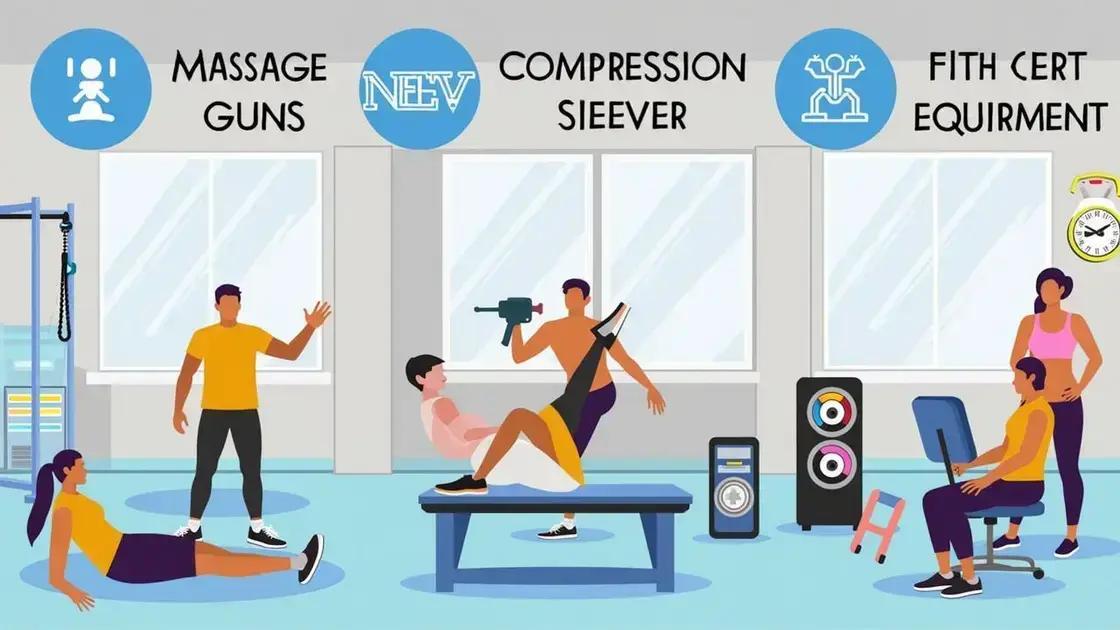
Recovery technologies provide numerous benefits for athletes, enhancing their post-workout routines and overall performance. Understanding these advantages is important for anyone committed to improving their fitness.
Faster Recovery Times
One of the primary benefits of recovery technologies is that they significantly reduce recovery times. Tools like massage guns and compression devices can help clear lactic acid from the muscles, speeding up the healing process after intense workouts.
Reduced Muscle Soreness
Using recovery tools regularly can lead to less muscle soreness. These technologies work by promoting better blood circulation and reducing inflammation, which often contributes to post-exercise discomfort. Athletes can look forward to feeling less sore and more ready for their next workout.
Improved Flexibility and Range of Motion
Many recovery technologies, such as stretching machines and infrared therapy, enhance flexibility and the range of motion. This improvement can lead to better performance in physical activities. Flexible muscles allow athletes to move more freely, reducing the risk of injuries.
Personalized Recovery Solutions
With advancements in technology, many recovery tools now offer personalized solutions based on individual needs. Devices that track biometrics can provide feedback and adjust recovery routines accordingly. This personalization allows athletes to optimize their recovery methods for maximum effectiveness.
How to Integrate Recovery Tools
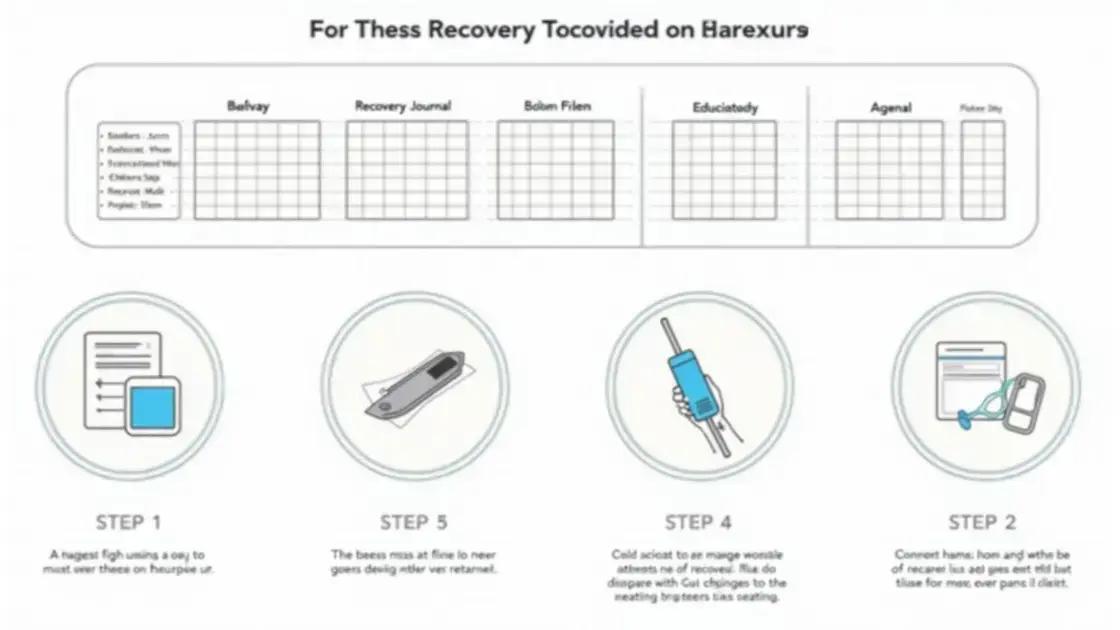
Integrating recovery tools into your workout routine can enhance performance and speed up recovery. Follow these effective steps to make these tools part of your post-workout process.
1. Assess Your Needs
Start by evaluating your fitness routine and recovery needs. Identify the areas where you experience soreness or fatigue after workouts. This will help you choose the right recovery tools for your specific requirements.
2. Start Slow
When adding recovery tools to your routine, introduce them gradually. Begin with one or two tools, such as a massage gun or compression sleeves. Monitor how your body reacts before incorporating more tools into your regimen.
3. Create a Recovery Schedule
Establish a regular recovery schedule. Plan specific days and times to use each recovery tool, ensuring consistency. For example, use a massage gun on workout days and incorporate compression therapy on rest days to enhance recovery.
4. Combine Techniques
Integrating multiple techniques can provide better results. For example, combine foam rolling with massage guns to target muscle tightness effectively. Consider pairing stretching exercises with technology like infrared therapy for overall improvement.
5. Track Your Progress
Keep a journal to track your recovery efforts and improvements. Note any changes in soreness, flexibility, and overall performance. This data will help in adjusting your routine and maximizing the benefits of each recovery tool.
Choosing the Right Recovery Tools

Choosing the right recovery tools is essential for maximizing your post-workout recovery. With various options on the market, knowing what to look for will help you make informed decisions.
1. Identify Your Goals
Start by defining your recovery goals. Are you looking to reduce muscle soreness, improve flexibility, or enhance blood circulation? Understanding your objectives will help narrow down the choices of recovery tools that best suit your needs.
2. Research Available Options
Take time to research the different recovery tools available. Look for popular options such as massage guns, compression wear, and foam rollers. Read reviews and gather information about each tool’s effectiveness and user experiences.
3. Consider Your Budget
Set a budget for your recovery tools. Prices can vary widely, so it’s important to find tools that provide good value without breaking the bank. There are effective options available in every price range, so you can find tools that meet your financial constraints.
4. Test Before You Buy
If possible, try out recovery tools before purchasing. Many fitness stores have demo units or offer trial periods for specialized equipment. Testing items like massage guns or compression devices can help determine what feels best for your body.
5. Consult Experts
Don’t hesitate to seek advice from fitness professionals. Trainers and physiotherapists can provide insightful recommendations based on your specific workout routine and recovery needs. They can help ensure you choose tools that align with your fitness goals.
Embracing High-Tech Recovery Tools for Optimal Results
The role of high-tech recovery tools in men’s post-workout routines is undeniably impactful. By understanding various recovery technologies, their benefits, and how to integrate them into your routine, athletes can significantly enhance their recovery processes.
Choosing the right recovery tools tailored to individual needs is essential for effectiveness. As you experiment with different options, keeping track of progress can help you identify which methods work best for your body.
Investing in high-tech recovery tools not only promotes quicker recovery and better performance but also fosters a healthier approach to fitness. Embrace the technology available to maximize your potential and achieve your fitness goals.
FAQ – Frequently Asked Questions about High-Tech Recovery Tools
What are high-tech recovery tools?
High-tech recovery tools are advanced devices designed to aid in muscle recovery and enhance performance after workouts. They include massage guns, compression gear, and infrared therapy machines.
How do recovery tools improve athletic performance?
Recovery tools help to reduce muscle soreness, improve circulation, and enhance flexibility, leading to quicker recovery times and better overall athletic performance.
How should I choose the right recovery tool?
Identify your specific recovery goals, research available options, set a budget, and try tools if possible. Consulting with fitness professionals can also provide valuable insights.
How often should I use recovery tools?
It is recommended to use recovery tools regularly, often post-workout or on rest days, to effectively aid recovery. Creating a consistent schedule will yield better results.
Are high-tech recovery tools suitable for all fitness levels?
Yes, high-tech recovery tools can benefit individuals at various fitness levels, from beginners to advanced athletes. It is essential to choose tools that match your specific needs and fitness goals.
Do I need to consult a professional to use recovery tools?
While it is not necessary, consulting a fitness professional or physical therapist can be beneficial to ensure you’re using recovery tools correctly and effectively.

